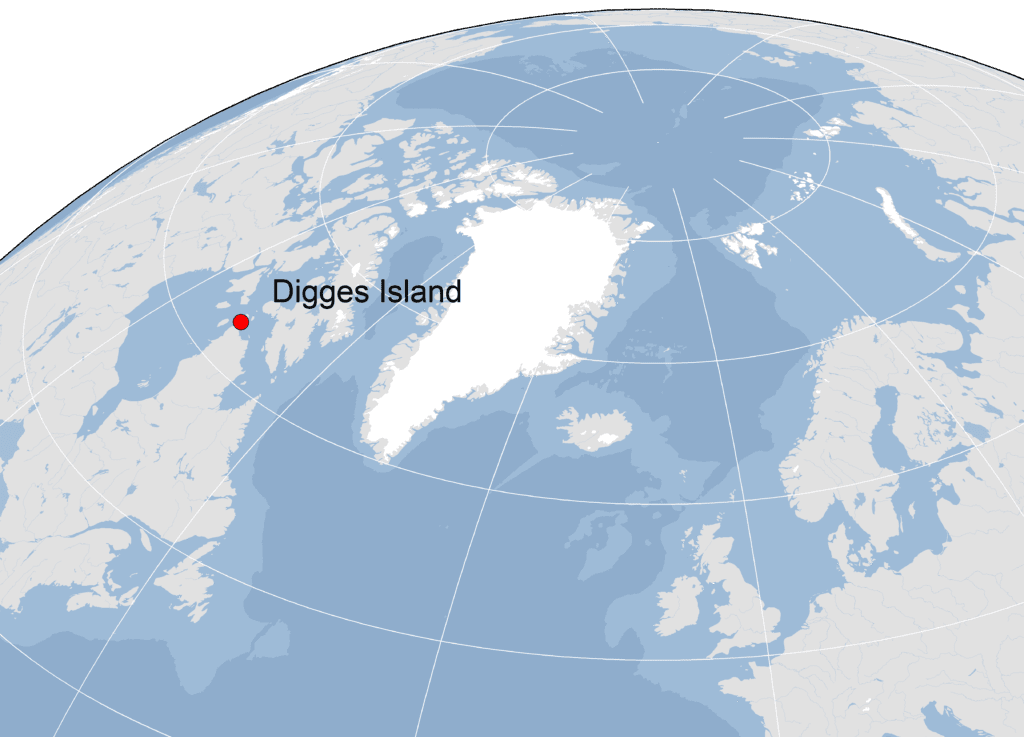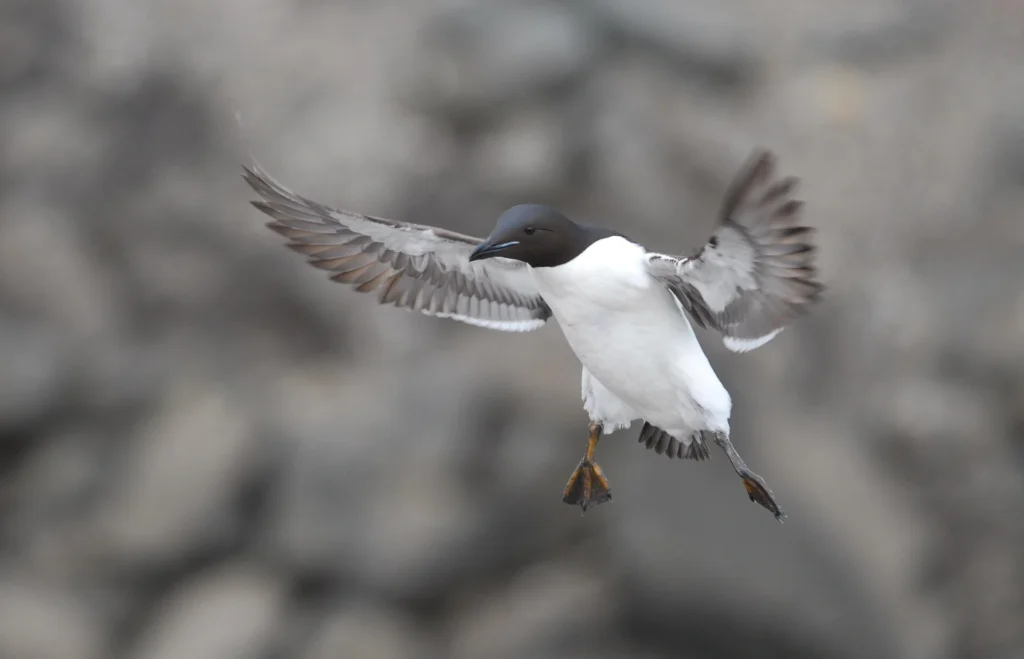Deployment of GLS loggers on Brünnich’s guillemots on Digges Island took place pre-SEATRACK but shared with SEATRACK subsequently.
Digges Sound (77.750°N x 62.870°W) is significant for the large numbers of Thick-billed Murres that nest on its cliffs. Colonies are located at both East Digges Island and Cape Wolstenhome. In 1980, the size of the East Digges colony was estimated to be about 180,000 breeding pairs; the Cape Wolstenhome colony was estimated to be somewhat smaller at about 107,000 breeding pairs. The total number of Thick-billed Murres nesting along Digges Sound is roughly 287,000 breeding pairs. This represents approximately 2.6% of the global, 4.4% of the North Atlantic, and almost 20% of the eastern Canada Thick-billed Murre population.

In addition to Thick-billed Murres, approximately 860 pairs of Black Guillemots nest on islands in Digges Sound. Approximately 350 pairs of Iceland Gulls (Kumlien’s form) and similar numbers of glaucous gulls are also present in the area. A small number of Atlantic Puffins nest in a colony on Dome Island to the south of West Digges Island.


Seatrack partner

Grant Gilchrist
Environment and Climate Change Canada

Kyle Elliott
McGill University
Data availability



